We sought a degree of relief from the sweltering heat in the benevolent shadow of Dhamekh Stupa, which stretched out across the green lawns of the Deer Park in Sarnath, 10 km from the temple town of Varanasi. We gazed up at the engravings that covered the lower half of the holy Buddhist shrine, and felt a comforting sense of all-pervading peace and wellbeing. It probably had to do with our awareness of the fact that the Deer Park was where Prince Siddharth, the Buddha, delivered his first sermon after he attained enlightenment under a peepal tree in Bodh gaya, 273 km away.
The ancient city of Varanasi
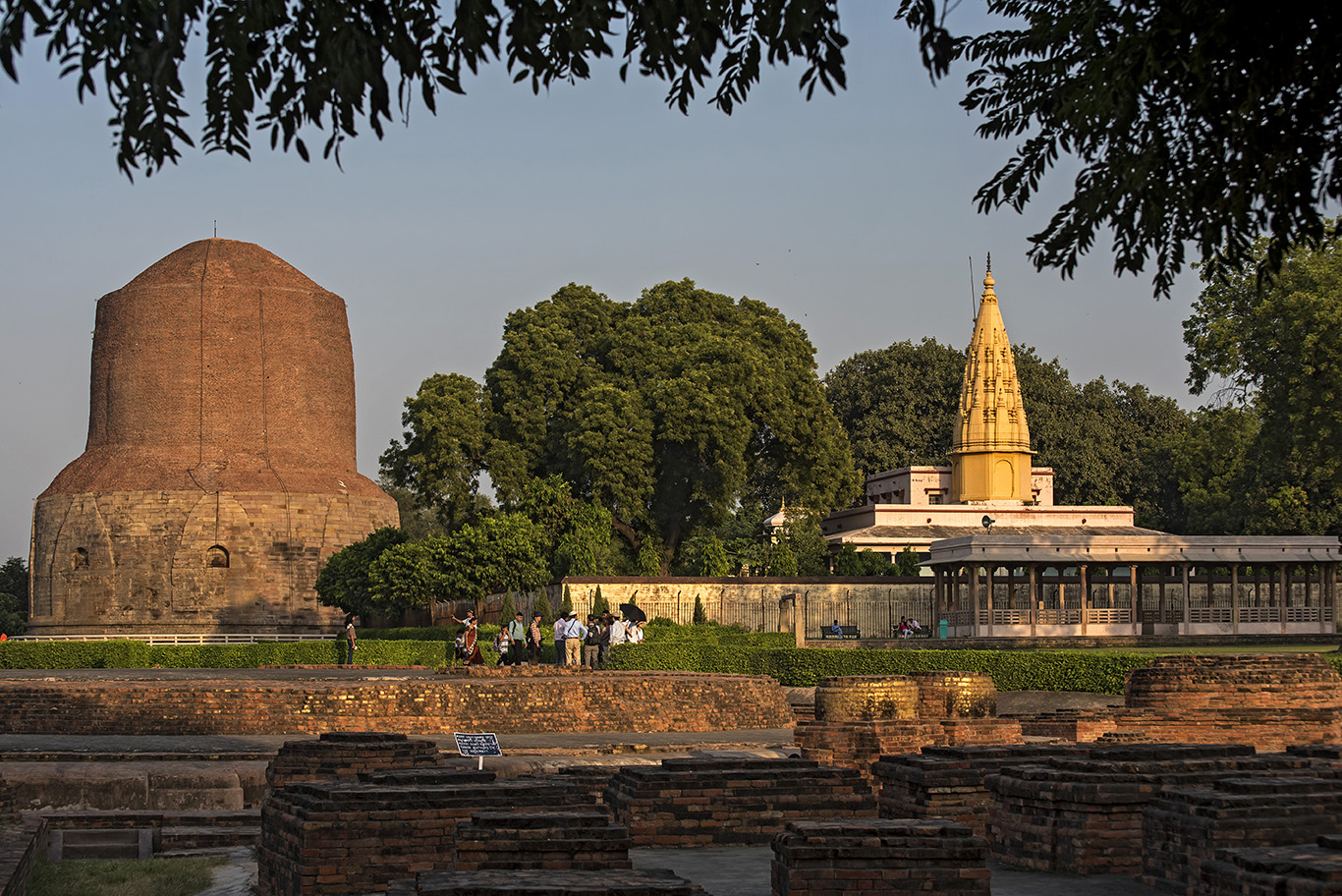
Fast forward! We were at the fabled ghats of Varanasi looking down at the sacred river Ganga as it flowed through the holy city believed to be the oldest continuously inhabited human settlement in the world. The sun had set, but there is little respite from the heat. A palpable sense of anticipation crackled like a high voltage current across the bustling waterfront of Dasawamedha Ghat where devotees had congregated to witness the evening Ganga River ‘aarti’. Boats were packed tight, hull to hull, as they jostled for strategic position on waters speckled with floating leaf-boats of flowers, smoking incense sticks, and flaming camphor. On cue, a battery of pujaris in crisp garments stepped up and onto a row of elevated platforms. With the practiced flair of well-rehearsed actors, they laid out the paraphernalia they would need for the ceremony and trimmed the wicks of multi-layers of oil lamps.

The tolling of bells, the chanting of ‘mantras’, the call of conch shells, emanated from the crush of temples that line the ghats. This was their moment of truth. The pujaris launched into a beautifully choreographed dance of fire swirling their flaming lamps in union. The pent-up sense of expectancy that hung heavy in the humid air finally found release. The atmosphere was thick with devotion, and we would not have been too surprised if Lord Shiva himself had gate crashed this chaos of piety and started to dance, dragging his adoring followers into a higher stratosphere of frenzy.
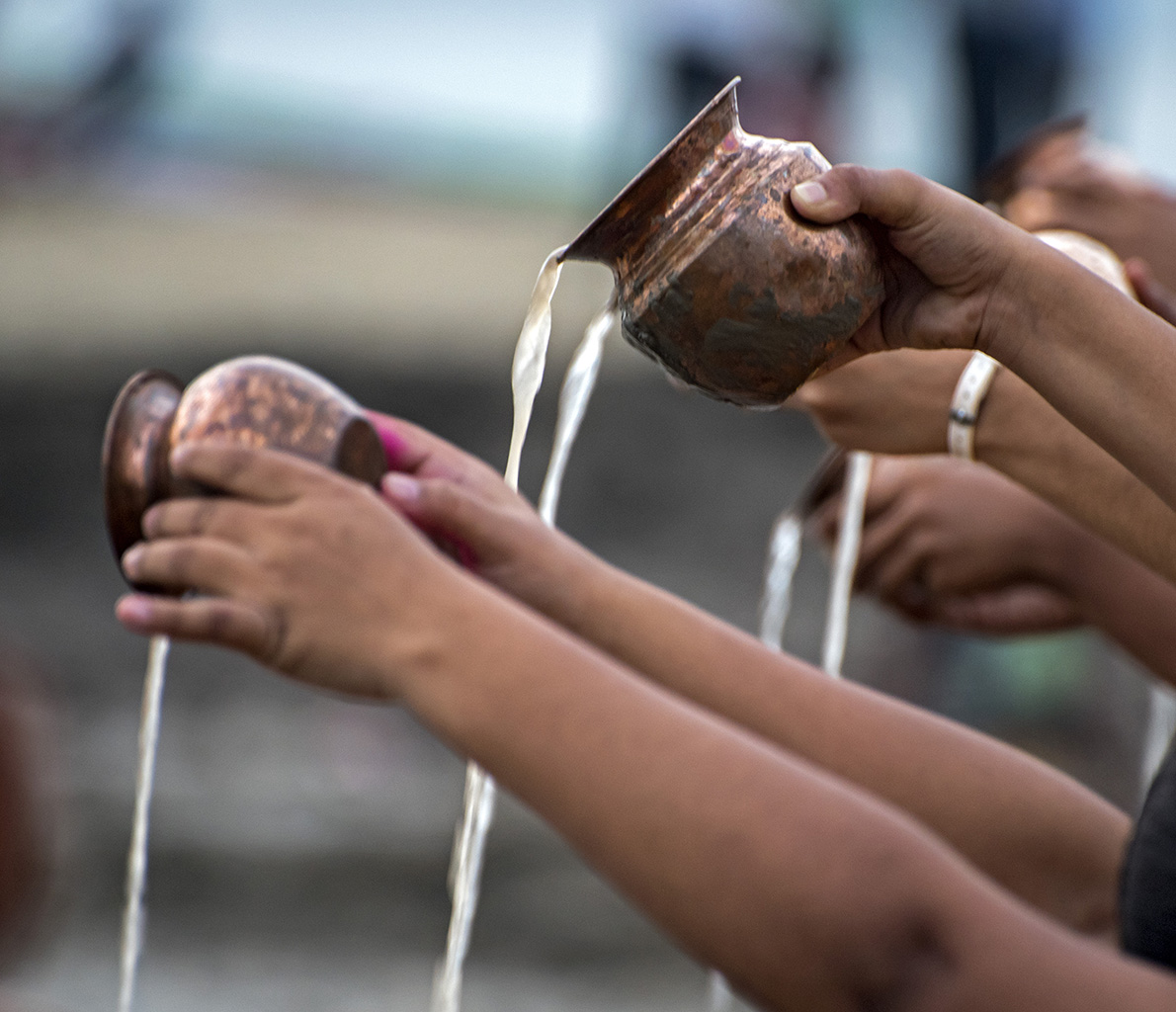
The sense of calm we experienced at the Deer Park earlier that day might well have happened eons ago, and on another planet. To imagine that in a single day we had occulated between two extreme expressions of devotion. We felt like trapeze artists flying through space laden with legend and piety. Though very different in mood and character, the twin cities of Varanasi and Sarnath furrow a common ground in that they are considered to be one of the most revered sights by followers of their respective religions: Hindus and Buddhists.
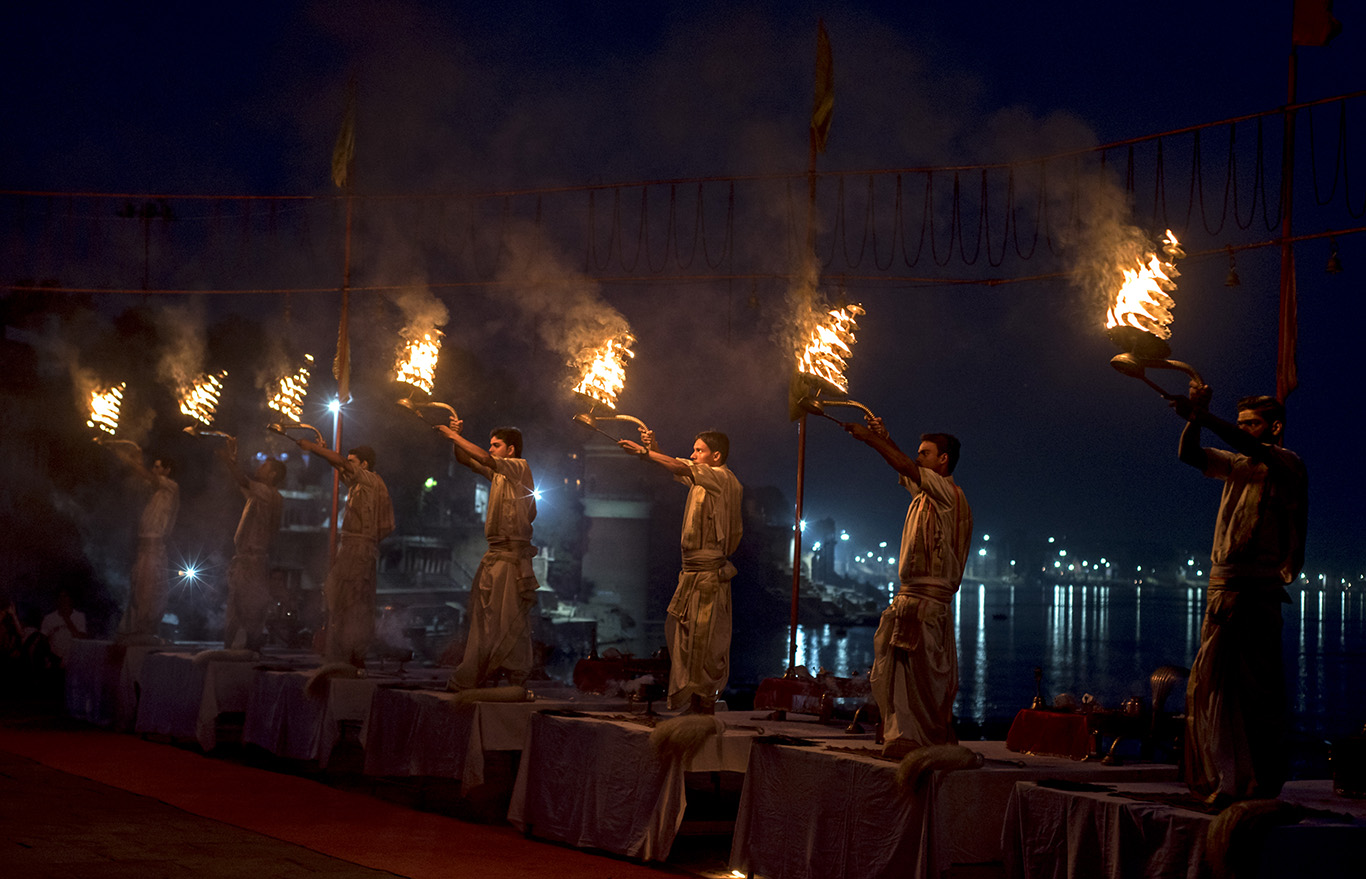
Sarnath, where it began
Sarnath, where the Buddha is believed to have set the Wheel of Life in motion, is deemed to be one of the four most holy places on earth by the Buddhists, and a must see stop on their pilgrim circuit. The other three are Lumbini in Nepal where he was born into a royal family; Bodhgaya, where he attained Elightenment, and Kushinagar, where he surrendered his mortal body and attained Maha Pari Nirvana. According to legend, five sages had been the Buddha’s faithful companions in his quest for the true meaning of life. After six years fasting and meditation, they finally abandoned him on the banks of a river and moved to Sarnath. But the Buddha had not forgotten them and he sought them out after attaining Enlightenment, and it was in the Deer Park that he honoured them by ensuring that they were the first to receive his message.
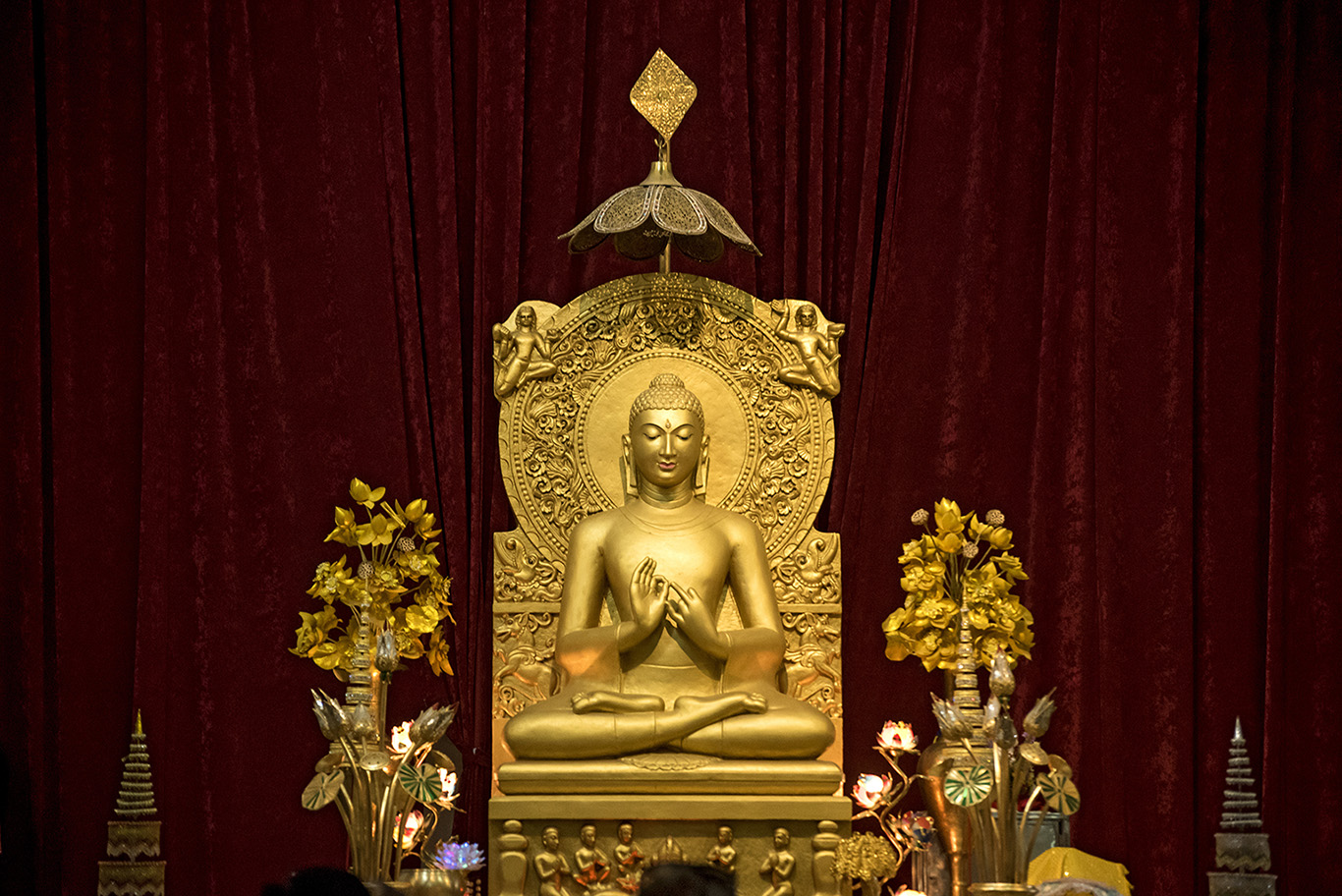
Today the lawns of the Park are dusted with the excavated ruins of an ancient monastery; a towering stupa; the broken stumps of an Ashoka Pillar – the crown of three lions is in amazingly good condition, and housed in the archaeological museum across the road – a few orange robed monks, and a scattering of tourists.

We took time out to meditate in front of the stupa, then reached out to touch one of its sun-baked stones. Was it our imagination or did it really happen: a flash of energy like an electric current sizzled our palms. We like to believe that the Buddha reached out to us through the centuries. We drew our hands away, reassured by the comforting knowledge that we were blessed.
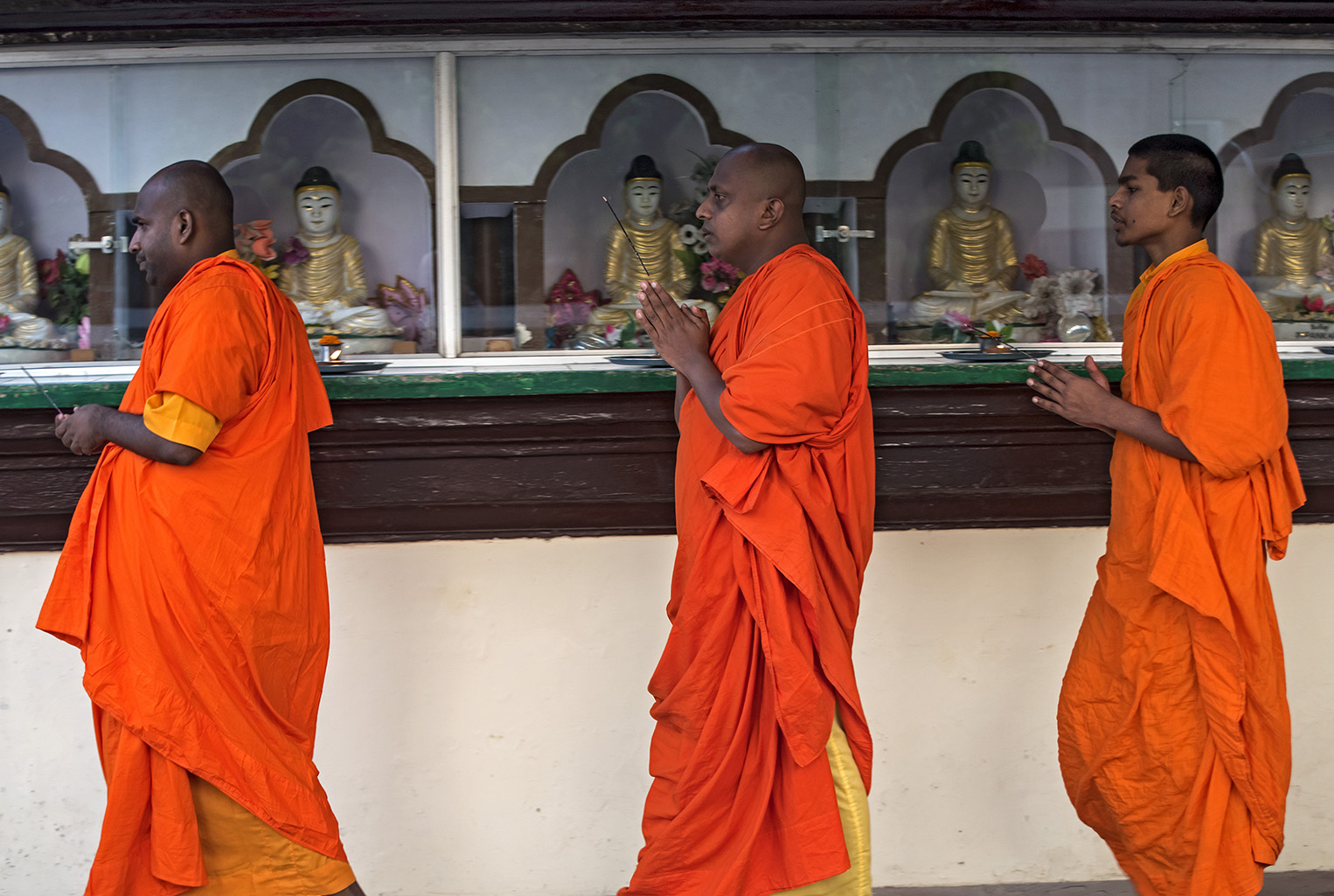
We walked around the larger-than-life statue of the Buddha and the five sages outside a Sri Lankan temple, and set off for Varanasi, a city laced with narrow winding streets that throbbed like a heart in distress. However, it was at the ghats of the river that Varanasi started to assert her distinctive personality. The waterfront greeted us with a kaleidoscope of sounds and sights that were as old as the city, yet laced with the fresh interpretation with every rendering.
A blend of devotion, rituals, and the crafts
We blended in with the sea of people, pilgrims and tourists, that milled across the steps that led from the chaos of temples and shrines, down to the river. An orange robed sadhu with elaborate caste marks smeared across his ample forehead invited us to take his photograph, and then demanded to be paid for it. An elderly man sat patiently at the base of banyan tree and waited for the gods to provide. A pilgrim dropped a coin into his begging bowls and notched up good karma. Kids splashed happily on the water’s edge. A barber shaved the head of a pilgrim with a cut throat razer. Pujaris performed sacred ceremonies…
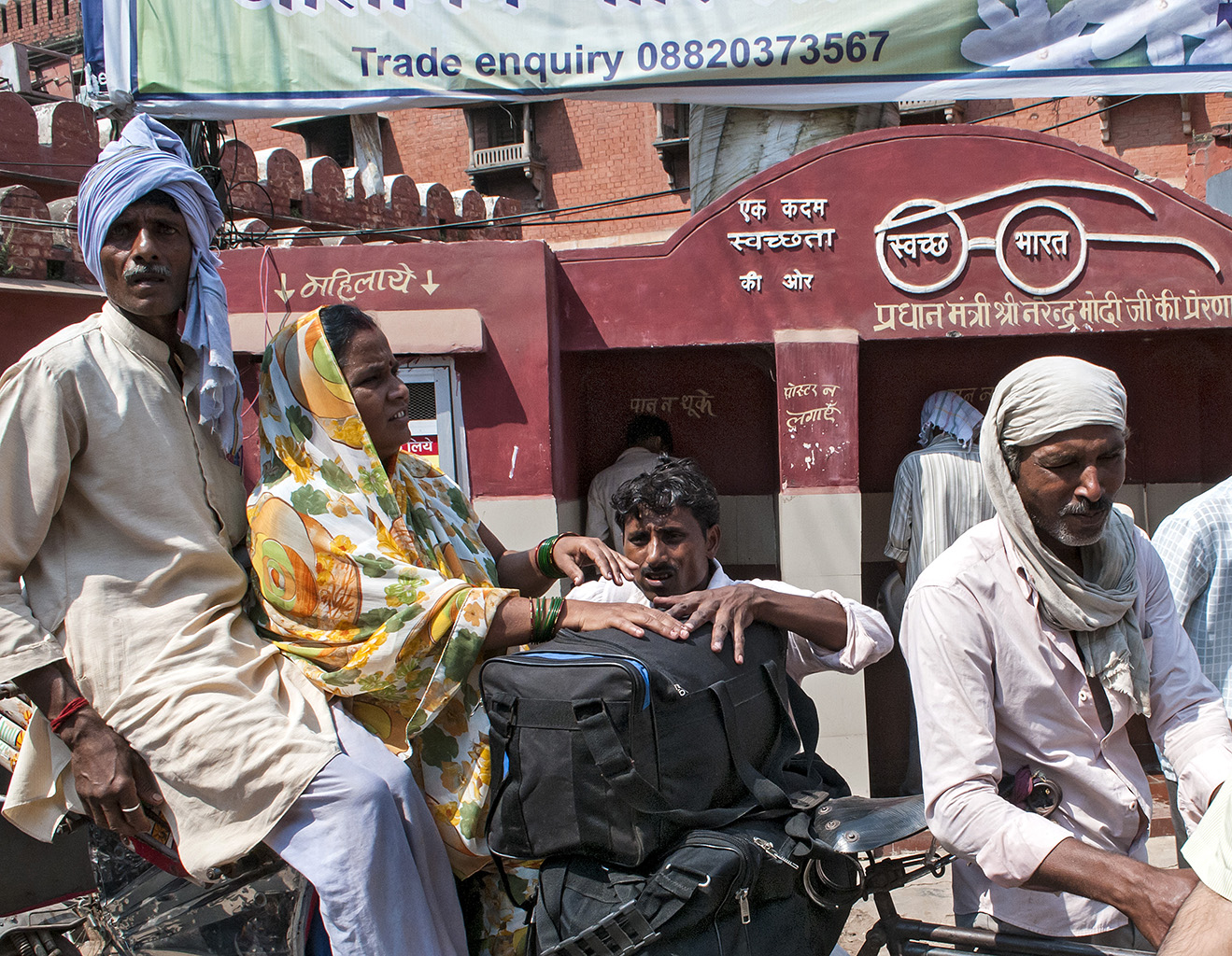
Our first task, as is required of most people who visit Varanasi, was to pay our respects to the presiding deity of Varanasi – Lord Shiva, whose lingam is enshrined in the Kashi Vishvanath Temple. The Lord may dwell in Mt Kailash in the Himalayas with his wife Parvati, but it is in Kashi (as the city was known in ancient times) that he mingles with his devotees. To reach the temple, we walked down a maze of narrow streets which assailed our senses with a bouquet of aromas: incense, spices, flowers, ghee, sweets and other unmentionable odours…signboards advertised astrologers, yoga centres, meditation classes, music schools…
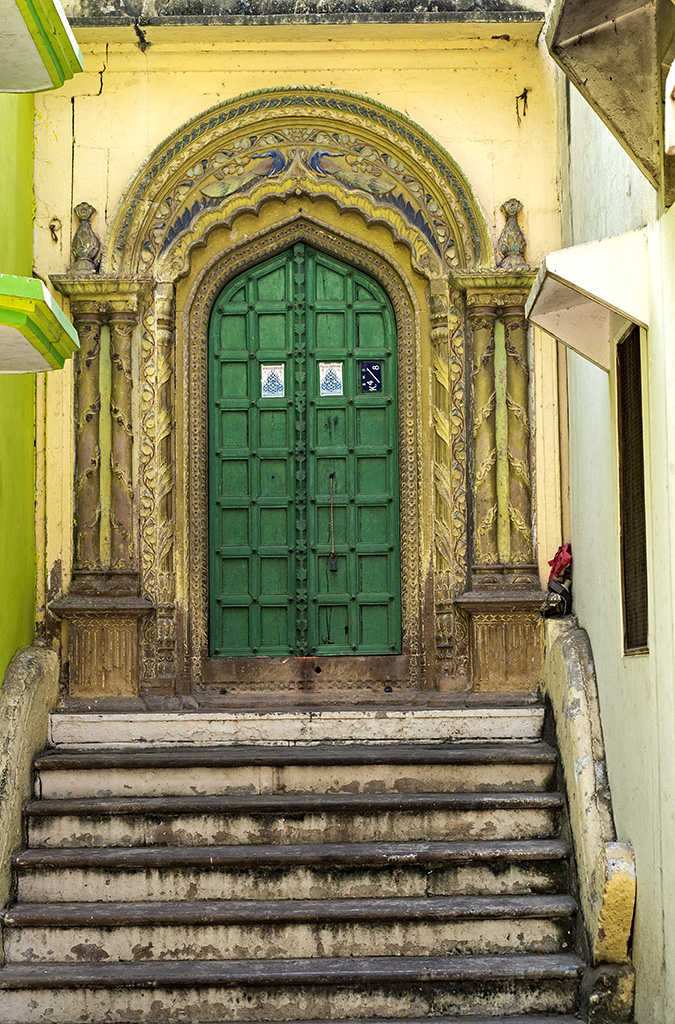
After our Lord Shiva darshan we set off for the weavers colony to admire and maybe even purchase the exquisite Banarasi saris they fashioned. We walked down narrow streets that chorused the clickity-clack song of looms. Weavers invited us into their simple homes and unravelled saris for us to admire. The ploy worked, and we found ourselves saddled with silk fabric we would probably never gift to the relatives and friends they were originally intended for.
There was enough time to refuel with a glass of Varanasi’s creamy ‘lassi’ and munch on the city’s fabled ‘paan’ before we set off to witness the evening river ‘aarti’ which proved to be a dramatic final curtain to an eventful day that spiralled to a crescendo of orchestrated devotion.

One would imagine that we had enough of river aartis after that performance; but no, we had to have more. So we were up at the ungodly hour of 4.30 am the next morning and reached Assi Ghat, the first of 80 that line the west bank of the riverfront, just in time to see a battery of pujaris step up to perform the sunrise Ganga aarti. While the morning ritual may have lacked the frenzy of its evening counterpart, it was equally graceful.

As the first rays of the sun fired up the clouds hovering above the eastern horizon, we set off on the long-awaited river cruise. The ghats of the city unravelled like a roll of film, each frame capturing its different moods. Dhobis laying out clothes like patchwork quilts on the steps; buffalos wallowing in the shallow waters; a stairway going nowhere; fortress-like walls flexing their muscles behind temple spires; murals of gods; holy men washing their orange robes; the minarets and domes of a mosque… The murmur of a prayer caressed our lips as the boat cruised past the city’s burning ghats which were blurred behind a veil of smoke. They say a dip in the Ganga at Varanasi washes away all one’s sins. To die and be cremated here, however, releases one from the cycle of life and death. And there it was: a temple that tilted like the Leaning Tower of Pisa.
Pujaris in temples across the ghats were waking the gods and preparing them to receive their worshipers. It promised to be a hectic day ahead of them, and they would only get to rest late at night when temple bells fell silent and peace returned to an agitated city: a moment of time when the gods of Varanasi took their cue from the Buddha in Sarnath 10 km away.

File Facts
Varanasi and Sarnath, 10 km apart by road in Uttar Pradesh, are well connected with the rest of the country by air, rail and road.
The temple towns, and more so Varanasi, have a wide selection of accommodation from five-star hotels to budget lodges.
For more information visit Uttar Pradesh Tourism at https://uptourism.gov.in

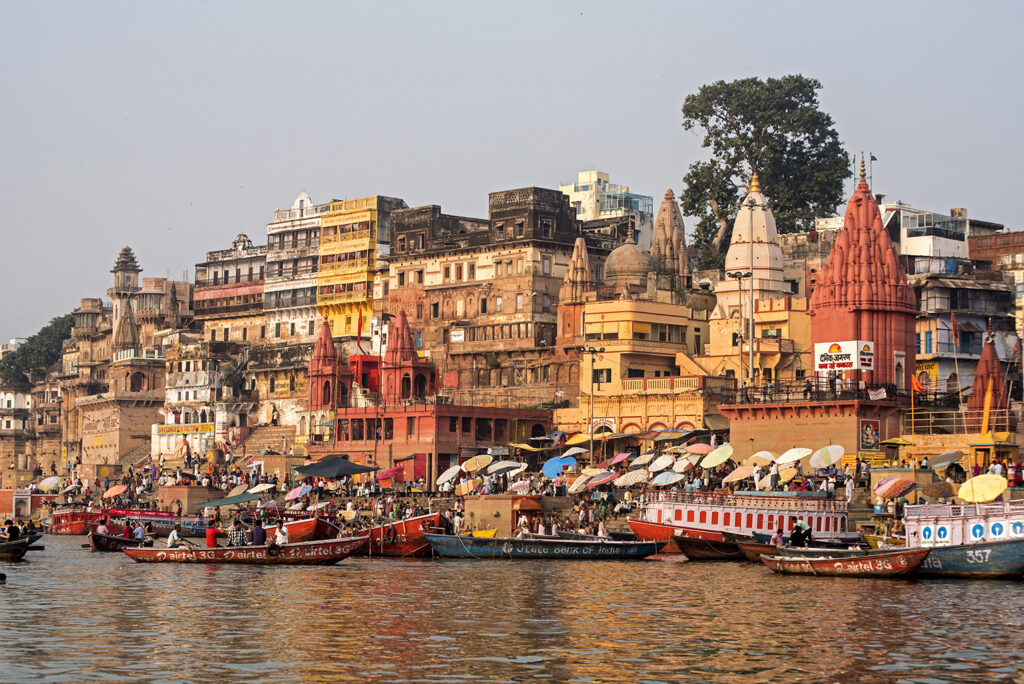
 [/column]
[/column]